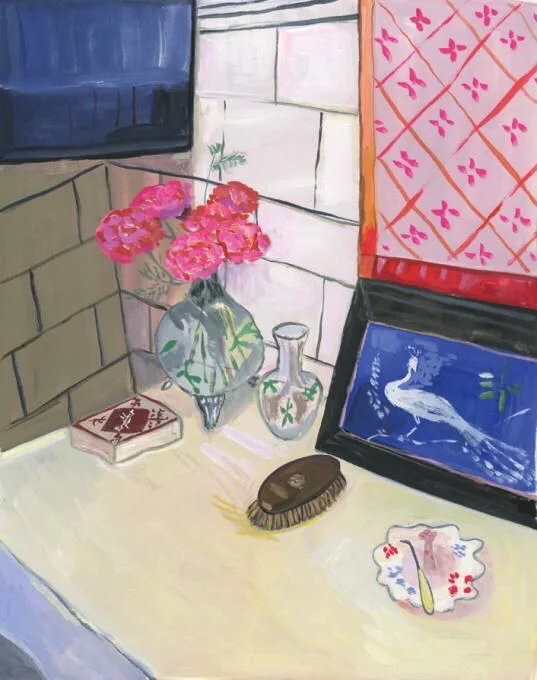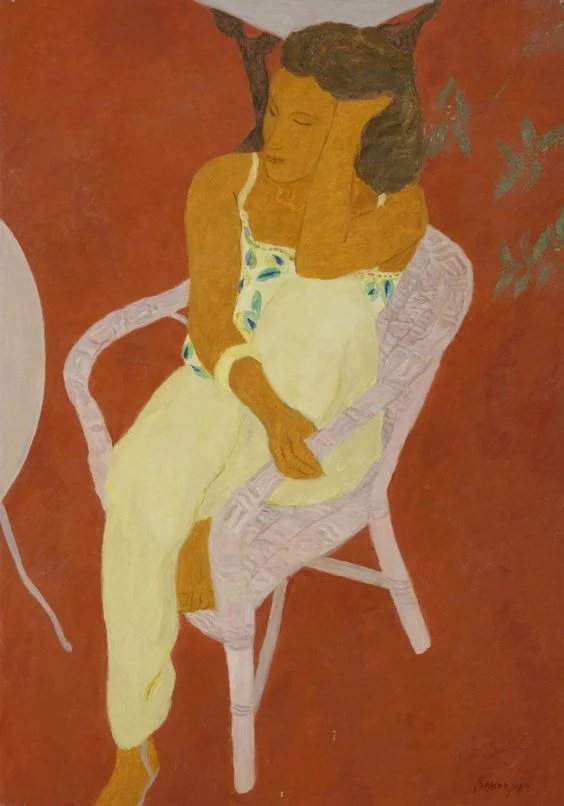4 Irresponsible Ways Society Treats Aging & What to Do About It
Originally published at The Body Is Not an Apology and republished here with permission.
Two elders standing outdoors, face-to-face, holding hands and talking.
One of my 91-year-old mother’s favorite sayings is that getting old isn’t for the weak of heart.
I always agree, but always tease her back that it beats the alternative – an old joke, but as true as ever.
Of course, the fact that my mother is 91 years old and still living by herself in an independent-living complex is significant itself on how many of both the social and physical aspects of aging have changed in the last half century.
It’s a lot easier to get old today than it has ever been before, and a lot more of us are successful at it than ever before.
I use the word successful quite purposely – as a member of the baby boomer generation, I am very aware of how the idea of aging has changed in society, and how we seniors are treated.
(Sorry, but I have to interrupt myself right here to admit I hate that word – senior – but what are the choices? Elderly? Aged? The over-sixty crowd? I’m almost 68 years old, and I don’t feel like any of those! Rant over.)
We’re healthier overall, we live longer, more of us live alone – by choice, say the majority – and we work until later in life, often whether we want to or not, either delaying retirement or going back to work at a new job after retirement.
Don’t get me wrong, I thank goodness for the array of products and services that now exist for those of us in the aging community! Does anyone else out there remember snickering at June Allyson when she made those TV commercials for adult diapers in the 1980s?
Just let me say, no one I know is snickering any more, and thank goodness for those undergarments – what did people do without them? The answer is: They stayed home, and now we don’t have to.
And that’s just one small example with huge impact. I like cheaper movie tickets, and am very happy with my various discounts courtesy of AARP.
But there’s the rub – like many others my age, I also really need those discounts.
Women across the board have lower incomes than men the older we get, especially women of color. Black women, for example, are widowed earlier than white women (because black men tend to die younger). And whereas historically, widows and widowers moved in with their children (only 10% of people over 65 lived alone in 1950), today most people prefer to live alone, especially if they own their own home (although, not surprisingly, there’s also a huge disparity between white people and people of color in home ownership in older Americans).
That means that well over a third of black and Latinx older women who live alone are also poor.
So, once again, we find ourselves having to look at the way society treats our aging population – which in this case means me, my friends, and a lot of my family, for example – from more than just one perspective.
There have been big advances in life expectancy and quality of life – if you have the income, can afford good medical care, afford to eat, and afford a decent place to live. It’s a lot harder if you can’t. And in spite of what most people think, neither social security nor medicare are enough to fully cover a person’s needs.
Women are much more vulnerable when it comes to reduced income as we age. We tend to have big gaps in our work lives, if we worked at all. And if we did work, our jobs were lower-paying and frequently didn’t include benefits such as retirement. Sometimes, we didn’t even make enough to pay into the social security system.
The hard economic facts about aging – that it’s a lot easier the more money you have – should be pretty obvious, but that’s not the story society tells us through popular culture.
Quick – who is the first character over, say, fifty years old and the first character over sixty years old that you can think of that you see regularly on a TV show? Is it a man or a woman? Where do they live? Are they rich or poor? Are they smart? Funny? Good at what they do? Think about the last movie or two you saw and answer the same questions.
Not that money and class are the whole picture about aging and society, but think for a moment about your own ideas about old people. Do old people make you uncomfortable? Does it depend on how old they are? Whether or not they’re mobile, or can hear, or see?
We’re all conditioned by our own experiences. Those of us who have lived with elderly relatives, grandparents, or great-grandparents may respond differently depending on their experience and their family’s attitudes.
Inevitably, however, it’s very hard to overcome the messages that constantly bombard us – consciously and subliminally – that getting old is a bad thing, a nasty thing, and something to be held at bay as long as possible.
The larger society reflects the culture, and the culture in turn influences the behavior of society.
With these thoughts in mind, I took an informal survey of my friends – all of whom qualify as women in the “aging” category, which means we’re all well over 65, and long past AARP’s comical threshold of something like fifty to quality as a “senior” – to see what they think are some of the irresponsible ways society treats aging.
Their answers, along with my own, are the product of our lived experience, as well as our observations and analyses of what we see around us. Here, in no particular order, are our conclusions – and what can be done.
1. Aging Is Treated as Synonymous With Loss of Competence
Instead of being respected and consulted for their experience and knowledge, older people are frequently belittled, disrespected, patronized, and infantilized, if not ignored altogether.
Physical disabilities are equated with the loss of intelligence and competence.
Solution: This is an area where education can be especially effective.
The current approach is to hide the elderly away in separate housing, segregated from the community so that often there is little interaction between different age groups in the community.
But there are many successful examples of how integrating childcare with eldercare is a great strategy for rewriting the cultural narratives of what aging has to be.
In the same way that we’ve seen major cultural shifts in attitudes towards marriage equality, for example, it’s possible to reorient our cultural perspective on who older people are through a broad effort in popular culture.
2. There’s a Lack of Accommodation for Changes That Come with Aging
Different people age in different ways with each person at her own pace. There is no “one size fits all.”
Inflexible expectations and rigid bureaucratic benchmarks get in the way of the ability of both the individuals and the people around them to adapt to the changes that are occurring.
This creates unnecessary obstacles and stress.
Solution: Better education about the diversity among older people and the multiple ways aging is expressed
And specific attention should be paid to places such as the workplace and other social activity.
In the market, for example, recognizing that sometimes it’s more important to advantage wisdom over short-term productivity, because it can contribute to increased long-term productivity in the end.
3. There Are Major Gaps in Medical Coverage
This happened to both a friend and to me – none of the mental health therapists recommended to us would accept medicare. I couldn’t find a single provider for what I needed who would accept my insurance.
Other friends experienced huge increases in the cost of medications. In one case, her prescription for vaginal dryness went up three and a half times in one year!
Meanwhile, a generic form of Viagra became available that is covered by most insurance companies. Here are two medications mostly used by older patients – one typically used by women increases in price, and one typically used by men drops.
Solution: Major policy changes in the delivery of healthcare in the US are the only way that these problems will be finally resolved.
In the end, this means universal single-payer health care, with full drug coverage for everyone.
This will require fair and reasonable market regulation of the pharmaceutical industry. When the companies no longer have to spend billions of dollars on advertising, they’ll have more money to devote to research and development of new drugs.
4. The Failure to Provide a Universal Guaranteed Minimum Pension System
The difference between the amount of social security benefits women receive compared to men is well known, and contributes to the 12.1% poverty rate of women who are 65 and older.
The reality is that in the second half of the last century, there was a dramatic social change in the way aging family members were treated.
The social ethic was that families took care of their own. By the end of the century, that had changed, and today most seniors prefer to live on their own if they can.
If they can’t, however, there is no safety net – because the responsibility for caring for the elderly is still primarily on the family and in the private sector.
If there is no family, the result is a vast number of older people living by themselves, often barely getting by.
Solution: To many people, a national universal guaranteed minimum pension system sounds like welfare, and another government giveaway.
At the core of this belief is the inability to grasp the value of individuals to the greater society at all stages of their life.
People don’t stop being members of society when they reach a certain age or a certain physical condition.
Contrary to what the statisticians employed by insurance companies want us to believe, a person’s worth cannot be measured in dollars based on how old they are or what level of productivity they can produce at any given time.
We are not machines!
The US is the richest country on the planet. There is no way we’re not capable of providing all of our people with the minimum means to live in dignity, with warmth and cooling, shelter, food, clothing, and intellectual stimulation through the end of their lives. And it is our moral obligation to do so.
About the Author
Lin Kaatz Chary has worked as an activist for social justice for more than forty years. She has worked nationally and internationally on environmental health policy and the fight to protect human health, especially women and children, from exposure to toxic chemicals. She has a masters and PhD in public health from the University of Illinois at Chicago School of Public Health. As a childhood member of the “Lane Bryant Chubby Club,” she has a lifetime of firsthand experience in fighting for Body Positivity and living as a fat woman in America. She is now an MFA student in the Graduate Creative Writing Program at Old Dominion University.


